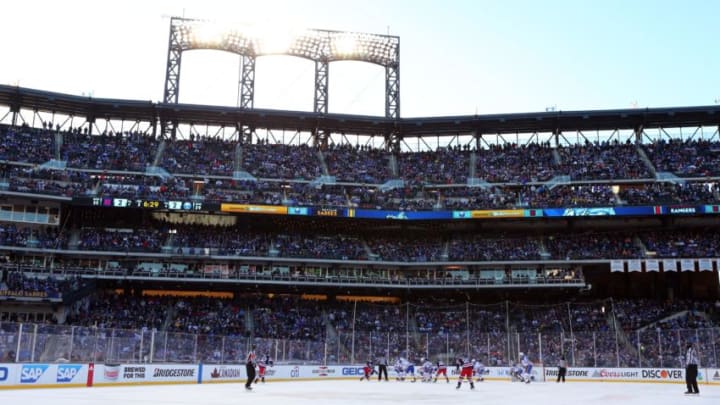Getting creative to fit in a full schedule
By Steve Paulus

How will the New York Rangers be able to finish a full 82 game schedule?
The NHL is getting serious. With a need to finish the regular season and Stanley Cup Playoffs before the start of the Tokyo Olympic Games, the league will have to figure out how to play 82 games in just 138 days. And that’s if the season starts on January 1, a proposition that may seem doubtful.
There’s a practical way to play a lot of games in a very short time and it involves some radical changes to the NHL norm.
First off, the rosters have to be expanded. If teams will be playing multiple back-to-back games in a COVID-19 environment, they will need more than 23 players on the active roster. There needs to be an NHL version of a taxi squad and would be similar to what Major League Baseball did when they resumed play. It’s what the NHL did for the postseason last year when teams were allowed to bring 31 players to the hub cities.
Realignment
There is no doubt that even by January, the pandemic will still be with us and there will issues with quarantine and travel. Those issues should be in place for months and the league has to minimize exposure. That means teams need to travel as little as possible and when they do, they need to create their own “mini-bubbles.” That means realigning the NHL into geographic regions.
We are going to assume that the restrictions entering Canada will be in effect in two months so all teams based in Canada will be in their own seven team division. The remaining 24 teams are divided into four regions with the intent to minimize travel and take advantage of existing rivalries.
Here’s an attempt:
Canadian Division Northeast Division
Calgary Boston
Edmonton New Jersey
Montreal Islanders
Ottawa Rangers
Toronto Philadelphia
Vancouver Pittsburgh
Winnipeg
Southeast Division Central Division
Carolina Buffalo
Dallas Chicago
Florida Columbus
Nashville Detroit
Tampa Minnesota
Washington St. Louis
Western Division
Anaheim
Arizona
Colorado
Los Angeles
San Jose
Vegas
The teams in the Northeast would clearly have the least amount of intra-city travel. However, for all of the teams in the United States, travel will be minimized by this alignment. Competitively, no one division stands out as tougher than the rest. From the performance of teams last season, there are good teams in every division.